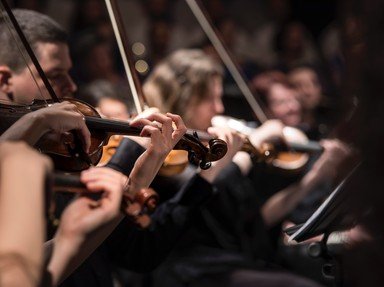Quiz Answer Key and Fun Facts
1. Marc Antoine Charpentier composed in 1684 an opera about a young man transformed into a deer. Who was this character from Greek myth, who ended up being torn apart by his own dogs?
2. One of the most prolific baroque composers left us a rather obscure work entitled "Erwürgtes Lamm", which translates to "Strangled Lamb". This vocal work is internationally indicated under the number BWV455. Who created this "Erwürgtes Lamm"?
3. Who created the opera "The Thieving Magpie" in 1817?
4. Which animal has given the popular name to Schubert's "Piano Quintet in A major"?
5. Who composed the operetta "Die Fledermaus"?
6. The "Carnaval des Animaux" by Camille Saint-Saens has several movements named after an animal. What is the thirteenth and best known movement of "Carnaval des Animaux"?
7. Which part of the opera "Czar Saltane" by Rimsky-Korsakov was named after an animal?
8. Which Russian composed "Peter and the Wolf"?
9. Which French composer created in 1919 the ballet "Le boeuf sur le toit" ("The Ox on the Roof"), based on a theatre play by Jean Cocteau?
10. What is the title of the musical with characters such as Grizabella, Macavity, Mr. Mistoffeles and Mungojerry?
Source: Author
JanIQ
This quiz was reviewed by FunTrivia editor
agony before going online.
Any errors found in FunTrivia content are routinely corrected through our feedback system.


